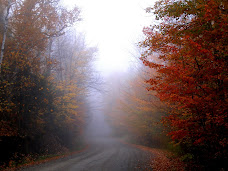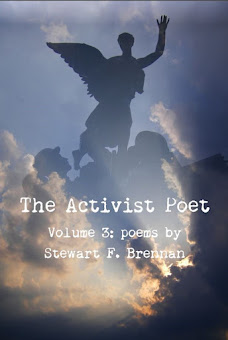Source: Global Research (Washington’s Blog)
http://www.globalresearch.ca/coverup-risk-of-nuclear-melt-down-in-u-s-higher-than-it-was-at-fukushima/5309002
Reactors in
Nebraska and elsewhere were flooded by swollen rivers and almost melted down.
See this,
this,
this
and this.
(Links Below)
The
Huntsville Times wrote
in an editorial last year:
A tornado
or a ravaging flood could just as easily be like the tsunami that unleashed the
final blow [at Fukushima as an earthquake].
An engineer
with the NRC says that a reactor meltdown is an “absolute certainty” if a dam
upstream of a nuclear plant fails … and that such a scenario is hundreds of times more likely than the tsunami that hit
Fukushima :
An engineer
with the Nuclear Regulatory Commission (NRC) … Richard Perkins, an NRC
reliability and risk engineer, was the lead author on a July 2011 NRC report
detailing flood preparedness. He said the NRC blocked information from the
public regarding the potential for upstream dam failures to damage nuclear
sites.
Perkins, in
a letter submitted
Friday with the NRC Office of Inspector General, said that the NRC
“intentionally mischaracterized relevant and noteworthy safety information as
sensitive, security information in an effort to conceal the information from
the public.” The Huffington Post first obtained the letter.
***
The report in question
was completed four months after … Fukushima.
The report
concluded that, “Failure of one or more dams upstream from a nuclear power
plant may result in flood levels at a site that render essential safety systems
inoperable.”
Huffington
Post reported last month:
These
charges were echoed in separate conversations with another
risk engineer inside the agencywho suggested that the vulnerability at one plant in particular — the
three-reactor Oconee Nuclear Station near Seneca, S.C. — put it at risk of a
flood and subsequent systems failure, should an upstream dam completely fail,
that would be similar to the tsunami that hobbled the Fukushima Daiichi nuclear
facility in Japan last year.***
The
engineer is among several nuclear experts who remain particularly concerned about the
Oconee plant in South Carolina, which sits on Lake Keowee, 11 miles downstream
from the Jocassee Reservoir. Among the redacted findings in the July 2011
report — and what has been known at the NRC for years, the engineer said — is
that the Oconee facility, which is operated by Duke Energy, would suffer almost
certain core damage if the Jocassee dam were to fail. And the odds of it failing
sometime over the next 20 years, the engineer said, are far greater
than the odds of a freak tsunami taking out the defenses of a nuclear plant in
Japan.
“The
probability of Jocassee Dam catastrophically failing is hundreds of
times greater than a 51 foot wall of water hitting Fukushima Daiichi,” the engineer said. “And, like the
tsunami in Japan, the man‐made ‘tsunami’ resulting from the failure of the
Jocassee Dam will –- with absolute certainty –- result in the
failure of three reactor plants along with their containment structures.
“Although
it is not a given that Jocassee Dam will fail in the next 20 years,” the
engineer added, “it is a given that if it does fail, the three reactor plants
will melt down and release their radionuclides into the environment.”
In the
letter, a copy of which was obtained by The Huffington Post, Richard H.
Perkins, a reliability and risk engineer with the agency’s division of risk
analysis, alleged that NRC officials falsely invoked
security concerns in redacting large portions of a report detailing the agency’s preliminary
investigation into the potential for dangerous and damaging flooding at U.S.
nuclear power plants due to upstream dam failure.
Perkins,
along with at least one other employee inside NRC, also an engineer, suggested
that the real motive for redacting certain information was to prevent the
public from learning the full extent of these vulnerabilities, and to obscure
just how much the NRC has known about the problem, and for how long.
Huffington
Post notes
today:
An
un-redacted version of a recently released Nuclear Regulatory Commission report
highlights the threat that flooding poses to nuclear power plants located near
large dams — and suggests that the NRC has misled the public for years about
the severity of the threat, according to engineers and nuclear safety
advocates.
“The
redacted information shows that the NRC is lying to the American public about
the safety of U.S. reactors,” said David Lochbaum, a nuclear engineer and
safety advocate with the Union of Concerned Scientists.
According
to the NRC’s own calculations, which were also withheld in the version of the
report released in March, the odds of the dam near the Oconee plant failing at
some point over the next 22 years are far higher than were
the odds of an earthquake-induced tsunami causing a meltdown at the Fukushima
plant.
The NRC
report identifies flood threats from upstream dams at nearly three dozen other
nuclear facilities in the United States, including the Fort Calhoun Station in
Nebraska, the Prairie Island facility in Minnesota and the Watts Bar plant in
Tennessee, among others.
Larry
Criscione, a risk engineer at the Nuclear Regulatory Commission who is one of
two NRC employees who have now publicly raised questions about both the flood
risk at Oconee and the agency’s withholding of related information, said
assertions that the plant is “currently able to mitigate flooding events,”
amounted to double-speak.
Criscione
said this is because current regulations don’t include the failure of the
Jocassee Dam — 11 miles upriver from Oconee — in the universe of potential
flooding events that might threaten the plant. “I think they’re being
dishonest,” Criscione said in a telephone interview. “I think that we currently
intend to have Duke Energy improve their flooding protection and to say that
the current standard is adequate is incorrect.”
According
to the leaked report, NRC stated unequivocally in a 2009 letter to Duke that it
believed that “a Jocassee Dam failure is a credible event” and that Duke had
“not demonstrated that the Oconee Nuclear Station units will be adequately
protected.” These statements — along with Duke’s own flood timeline associated
with a Jocassee Dam failure and NRC’s calculated odds of such a failure — were
among many details that were blacked out of the earlier, publicly released
report.
Richard H.
Perkins, a risk engineer with the NRC and the lead author of the leaked report,
pointed to the analysis by the Association of Dam Safety Officials in an email
message to The Huffington Post. “I felt it made a significant point that large,
fatal, dam failures occur from time to time,” he said. “They are generally
unexpected and they can kill lots of people. It’s not credible to say ‘dam
failures are not credible.’”
Dave
Lochbaum, the Union of Concerned Scientists engineer who reviewed a copy of the
un-redacted report, says these revelations directly contradict the NRC’s
assertions that Oconee is currently safe. “Fukushima operated just under 40
years before their luck ran out,” Lochbaum, who worked briefly for the NRC
himself between 2009 and 2010, and who now heads the Nuclear Safety Project at
UCS, said in a phone call. “If it ever does occur here, the consequences would
be very, very high.
“Japan is
now building higher sea walls at other plants along its coasts. That’s great
for those plants, but it’s too late for Fukushima. If in hindsight you think
you should have put the wall in,” Lochbaum said, “then in foresight you should
do it now.”
Other
Comparisons Between Dangers In U.S. and Fukushima
There are,
in fact, numerous parallels between Fukushima and vulnerable U.S. plants.
A Japanese
government commission found that the Fukushima accident occurred because Tepco
and the Japanese government were negligent, corrupt and in collusion. See this,
this
and this.
The U.S. NRC is similarly corrupt.
The
operator of the Fukushima complex admitted earlier this month that it knew of the extreme vulnerability of its plants, but:
If the
company were to implement a severe-accident response plan, it would spur
anxiety throughout the country and in the community where the plant is sited,
and lend momentum to the antinuclear movement ….
The U.S.
has 23 reactors which are virtually identical to Fukushima.
Most American
nuclear reactors are old. They are aging poorly, and are in very
real danger of melting down.
And yet the
NRC is relaxing safety standards
at the old plants. Indeed, while many of the plants are already past the
service life that the engineers built them for, the NRC is considering
extending licenses another 80 years, which
former chairman of the Tennessee Valley Authority and now senior adviser with
Friends of the Earth’s nuclear campaign David Freeman calls “committing
suicide”:
You’re not
just rolling the dice, you’re practically committing suicide … everyone living
within a 50 mile radius is a guinea pig.
Indeed, the
Fukushima reactors were damaged by earthquake even before the tsunami hit (confirmed here).
And the American reactors may be even
more vulnerable to earthquakes than Fukushima.
Moreover,
the top threat from Fukushima are the spent
fuel pools. And American nuclear plants have fuel pool problems
which could dwarf the problems at Fukushima.
And neither
government is spending the small amounts it would take to harden their reactors against a power outage.
The parallels run even deeper. Specifically, the
American government has largely been responsible for Japan’s nuclear policy for decades.
And U.S. officials are apparently a primary reason behind Japan’s cover-up of
the severity of the Fukushima accident … to
prevent Americans from questioning our similarly-vulnerable
reactors
Links:
Berm
Protecting Fort Calhoun Nuclear Plant Breaks … Plant Flooded, on Emergency
Diesel Generators
http://www.washingtonsblog.com/2011/06/berm-protecting-fort-calhoun-nuclear-plant-breaks-plant-flooded-on-emergency-diesel-generators.htmlNebraska Nuclear Threat: As Predictable as Fukushima
http://www.washingtonsblog.com/2011/06/nebraska-nuclear-threat-as-predictable-as-fukushima.html
Nebraska Nuclear Reactor Flooded
http://www.washingtonsblog.com/2011/06/nebraska-nuclear-reactor-flooded.html
Parts of Nebraska Nuclear Facility Already Under 2 Feet of Water … But – So Far – Emergency Flood Walls Are Protecting Electrical Equipment
http://www.washingtonsblog.com/2011/06/parts-of-nebraska-nuclear-facility-already-under-2-feet-of-water-but-so-far-emergency-flood-walls-are-protecting-electrical-equipment.html
Nuclear Engineer Accuses regulators of Safety Cover up
http://thehill.com/blogs/e2-wire/e2-wire/249843-nrc-engineer-accuses-regulators-of-safety-cover-up
Letter: NRC intentionally mischaracterized relevant and noteworthy safety information http://big.assets.huffingtonpost.com/igletter.pdf
NRC Report: Flooding of Nuclear Power Plant Sites following upstream dam failures
http://pbadupws.nrc.gov/docs/ML1218/ML12188A239.pdf
Japanese Seismologist in 2004 on Risk of Nuclear Accident: “It’s Like a Kamikaze Terrorist Wrapped in Bombs Just Waiting to Explode”
http://www.washingtonsblog.com/2011/03/japanese-seismologist-in-2004-on-risk-of-nuclear-accident-its-like-a-kamikaze-terrorist-wrapped-in-bombs-just-waiting-to-explode.html
Engineers Knew Fukushima Might Be Unsafe, But Covered It Up … And Now the Extreme Vulnerability of NEW U.S. Plants Is Being Covered Up
http://www.washingtonsblog.com/2011/11/engineers-knew-fukushima-might-be-unsafe-but-covered-it-up-and-now-the-extreme-vulnerabilty-of-new-u-s-plants-is-being-covered-up.html
Japan’s Nuclear Meltdown, the Economic Meltdown, and the Gulf Oil Meltdown All Happened for the SAME REASON
http://www.washingtonsblog.com/2011/04/japans-nuclear-melt-down-economic.html
General Electric designed reactors in Fukushima have 23 sisters in USA
http://openchannel.nbcnews.com/_news/2011/03/13/6256121-general-electric-designed-reactors-in-fukushima-have-23-sisters-in-us
US Nuclear Regulators weaken safety rules
http://www.cbsnews.com/stories/2011/06/20/national/main20072497.shtml
US nuclear regulator meets to discuss 80-year licenses for old reactors
http://enenews.com/you-wont-believe-this-us-nuclear-regulator-meets-to-discuss-80-year-licenses-for-old-reactors-not-just-rolling-the-dice-youre-practically-committing-suicide-expert-video/comment-page-1
Japan’s Atomic disaster due to collusion
http://www.reuters.com/article/2012/07/05/us-japan-nuclear-report-idUSBRE8640K420120705
A U.S. Nuclear Accident Could Be a Lot Worse than Japan
http://www.washingtonsblog.com/2011/04/a-u-s-nuclear-accident-could-be-a-lot-worse-than-japan.html
The Top Short-Term Threat to Humanity: The Fuel Pools of Fukushima
http://www.washingtonsblog.com/2012/04/the-largest-short-term-threat-to-humanity-the-fuel-pools-of-fukushima.html
The AMERICAN Government Is Dictating Japanese Nuclear Policy
http://www.washingtonsblog.com/2012/10/american-government-is-dictating-japanese-nuclear-policy.html





















a.jpg)

a.jpg)








No comments:
Post a Comment
Thanks for commenting on this post. Please consider sharing it on Facebook or Twitter for a wider discussion.